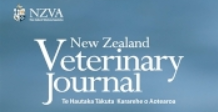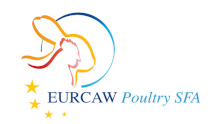Document type: online pre-publication of scientific review in New Zealand Veterinary Journal
Authors: FP Mee, LA Boyle
Preview: Consumers perceive pasture-based systems of milk production as natural and therefore better for cow welfare than confinement systems. However both systems are heterogeneous and continually evolving, varying from total confinement to total pasture with many hybrid intermediaries. To compare the welfare of dairy cows in these various systems, we use the three spheres framework, comprising biological functioning, natural behaviour and affective states. Considering biological functioning, pasture-based cows are less at risk of subclinical and clinical mastitis, claw lesions, lameness, metritis, early embryonic mortality, culling and mortality, but at more risk of internal parasitism, malnutrition and delayed onset of oestrous activity postpartum than confined cows. Regarding natural behaviours, pasture-based cows exhibit less agonistic behaviour, better lying behaviour, more normal oestrous behaviours and better synchronicity of behaviours than confined cows. They also have the opportunity to graze, which is one of the main features of the behavioural repertoire of dairy cows, but, they may also experience long periods away from pasture in larger herds, and severe climatic stresses which will become increasingly important as the climate changes. Our current ability to assess the affective state of dairy cows is poor. For example, hunger is an important subjective state that cannot be measured directly. The growing focus on ensuring that animals have lives worth living, means that dairy cows should garner some positive emotions from their lives, and it seems clear that pasture access is essential for this. Clearly measurement of affective state is an important challenge for future dairy cow welfare research. At the extremes of management systems, there can be major differences in animal welfare but in hybrid systems, dairy cows experience elements of both confinement and pasture which may ameliorate the negative effects of each on cow welfare. Ultimately, the optimal system gives cows an element of choice between both environments. Moreover management of the system, whether it is confinement or pastured-based, may be as important as the system of management in ensuring good dairy cow welfare and addressing societal concerns.




